Understanding the Foundation of Prevention
Substance use prevention is a multifaceted approach aimed at reducing or eliminating the use of alcohol, tobacco, and illicit drugs, especially among youth. With target strategies designed to minimize health risks and promote mental well-being, prevention programs seek to improve community health outcomes. These efforts are essential given the alarming overlap between substance use disorders and mental health issues like suicidality, particularly among vulnerable groups.
Defining Substance Use Prevention: Scope and Goals
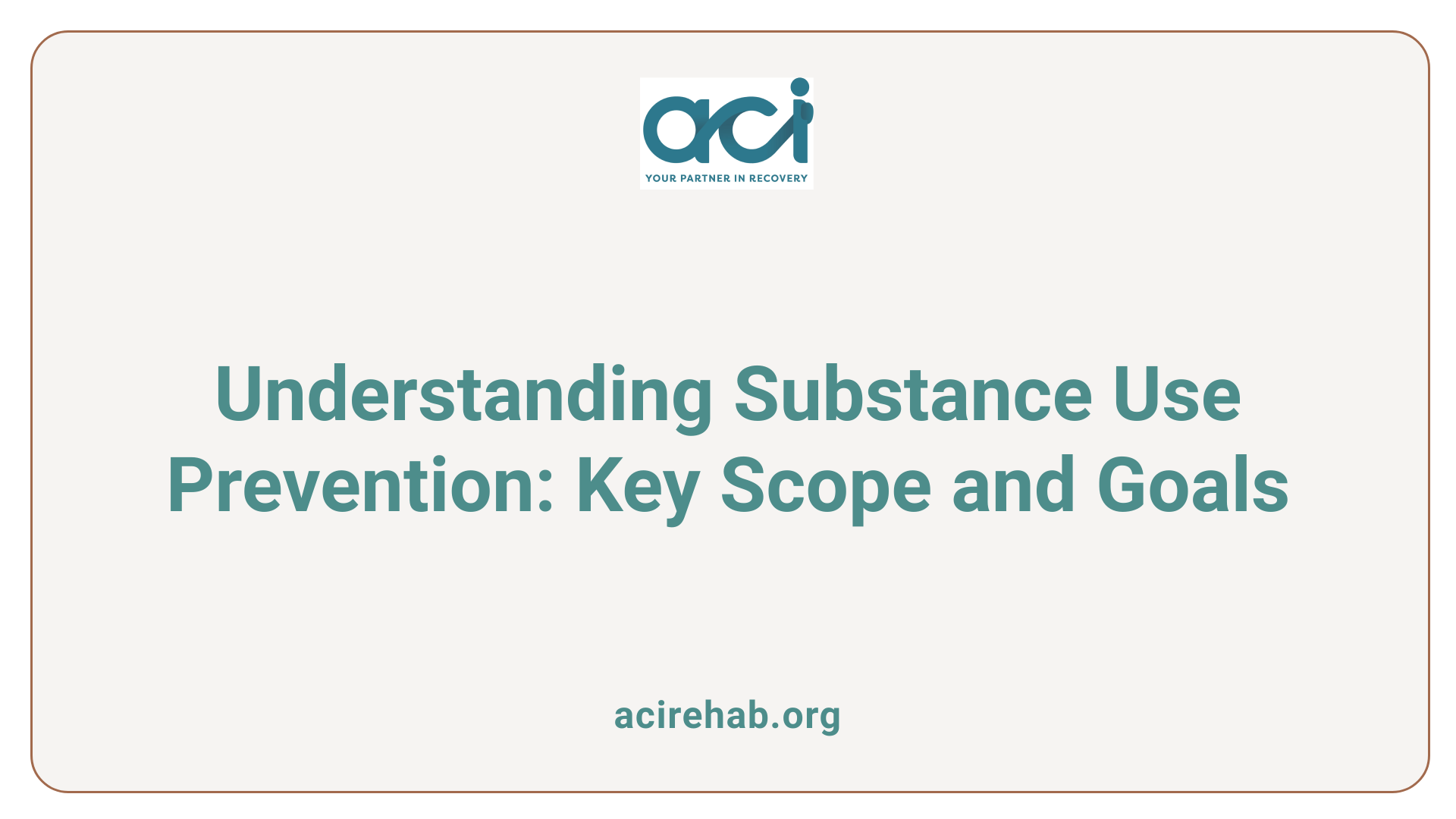
What is substance use prevention?
Substance use prevention refers to the collective strategies and interventions designed to reduce or eliminate the misuse of alcohol, tobacco, and illicit drugs, with a significant focus on youth. These initiatives aim not only to delay the onset of substance use but also to mitigate the progression to substance use disorders.
The intertwining nature of substance use and mental health highlights the need for comprehensive prevention strategies. Risk factors such as anxiety, depression, and trauma often overlap with substance use issues, making it crucial for prevention programs to consider mental health aspects. For instance, many adolescents who face suicidal ideation also exhibit signs of substance use disorders.
Effective prevention strategies must be culturally sensitive, customizing approaches to serve the diverse needs of communities, especially for at-risk populations such as Indigenous youth. Engaging parents, schools, and community organizations fosters a supportive environment where healthy choices can be emphasized.
Additionally, youth-led initiatives are powerful in creating relatable strategies, as young individuals relate better to their peers. The overarching goal of substance use prevention is to promote health and resilience while simultaneously reducing the stigma that often surrounds substance use issues.
Focus on youth and mental health
The focus on youth in substance use prevention cannot be overstated, as early intervention is key to long-term positive outcomes. By enhancing protective factors—like social competence, self-regulation, and supportive relationships—communities can effectively shield young people from the pitfalls of substance misuse. Education is an integral component, fostering open conversations about drugs and their consequences that can help deter youth from these habits.
Prevention efforts, such as the ‘Talk. They Hear You.’ campaign and National Prevention Week, are excellent resources that aim to educate parents and youth alike, laying the foundation for healthier lifestyles.
Ultimately, harnessing community-wide support combined with robust, evidence-based programs will pave the way for healthier youth and, in turn, healthier communities.
Exploring Effective Drug Prevention Strategies
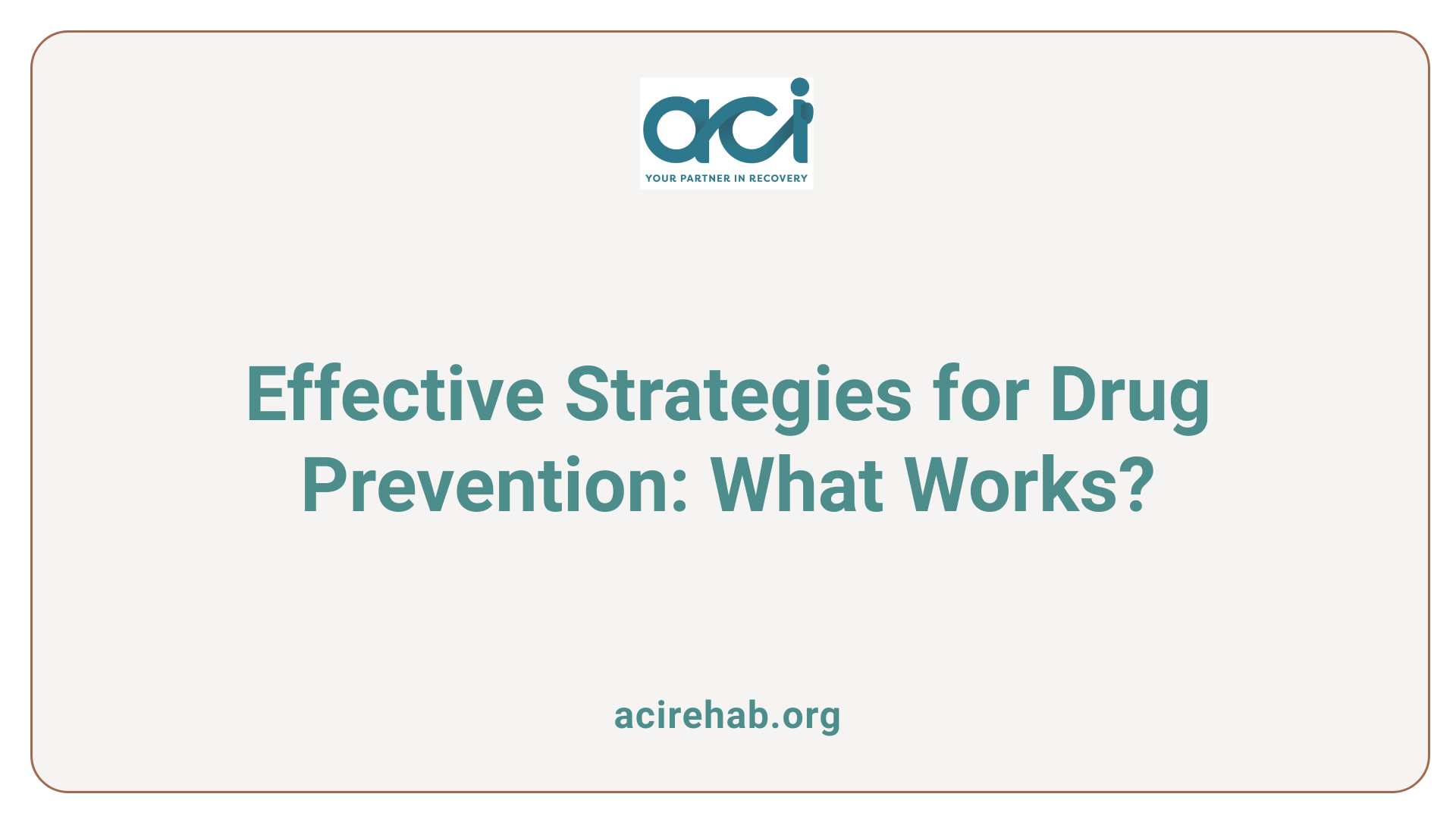
What are some effective drug prevention strategies?
Effective drug prevention strategies have proven essential in combating substance use among youth. At the forefront of these strategies is maintaining open and honest conversations about the dangers of substance misuse. Parents and caregivers should regularly discuss the risks associated with drug use, creating a dialogue that fosters trust and openness.
In addition, developing healthy friendships is crucial. Young individuals should be encouraged to surround themselves with supportive peers who respect their choices to abstain from drugs. Practicing assertiveness skills, such as saying no to peer pressure, empowers youth to make sound decisions.
Awareness of individual and family risk factors for substance abuse can significantly aid in early identification of potential issues. Factors like family history of substance use, trauma, or poor mental health can serve as warning signs, allowing for timely intervention.
Maintaining a balanced lifestyle also plays a pivotal role in prevention. Engaging in constructive activities, managing stress effectively, and setting personal goals can divert attention from drugs. Furthermore, accessing available resources such as counseling services or support groups can provide essential guidance and assistance to those struggling or at risk.
Lastly, prevention programs designed to improve life skills, resilience, and family relationships can effectively deter drug use, proving that proactive and multifaceted measures are the keys to reducing substance abuse.
Role of community and family
Communities play a significant role in substance use prevention efforts. Initiatives like the ‘Talk. They Hear You.’ campaign and National Prevention Week encourage community involvement and awareness. Families, too, are vital; regular communication about substance use within home settings can significantly decrease the likelihood of youth engaging in drug use. By enhancing protective factors, such as family cohesion and positive social ties, communities and families together can build strong defenses against substance misuse.
The Role of Primary Prevention in Substance Use
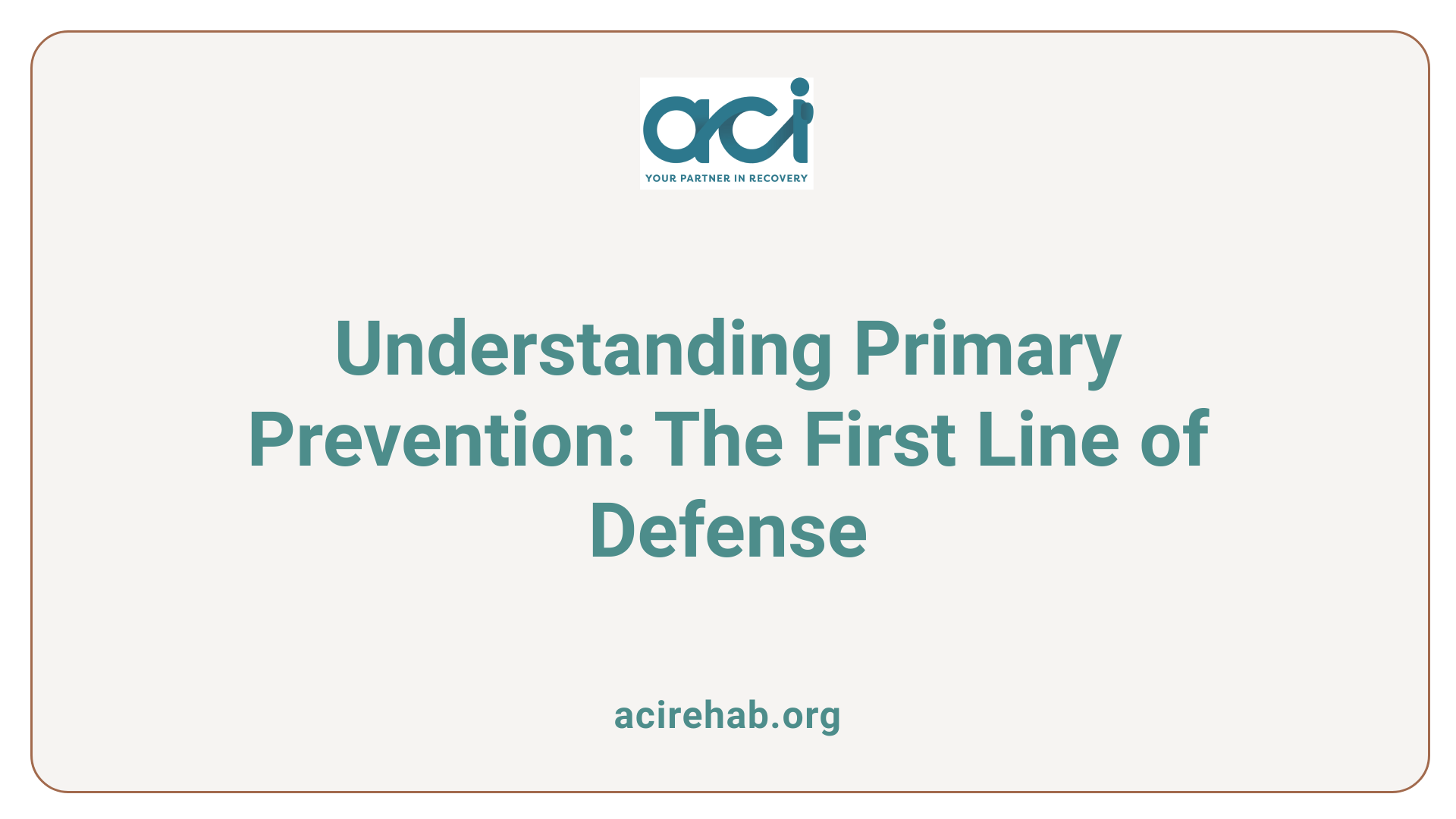
What are the differences between primary prevention and other types of substance use prevention?
Primary prevention is targeted at preventing the initiation of substance use, especially among young people. It effectively addresses risk factors and enhances protective strategies to delay the first use of substances. This proactive approach includes educational campaigns, community engagement, and family involvement to foster environments where substance use is less likely to occur.
In contrast, secondary prevention focuses on early detection and intervention for individuals who have begun experimenting with substances. This approach aims to prevent further use and address any associated issues at an early stage.
Lastly, tertiary prevention deals with rehabilitation and recovery for those who have developed substance use disorders. This method is critical for individuals already impacted by substance misuse, focusing on managing addiction and preventing relapse.
The distinct focus of primary prevention sets it apart from secondary and tertiary strategies, which address problems post-initiation. It emphasizes education and community involvement, aligning with global strategies like those from the United Nations Office on Drugs and Crime (UNODC), thereby reducing drug demand and promoting overall public health. Developing a comprehensive prevention framework that encompasses these tiers—primary, secondary, and tertiary—is essential for effectively tackling substance use issues across populations.
Focus on delaying substance use onset
Preventing substance use before it starts, particularly among youth, is vital in reducing long-term health complications. Research shows that early engagement in drug use is linked to increased risks of developing substance use disorders, thus emphasizing the need for timely preventive measures like educational programs, community coalitions, and parent-child discussions. Such efforts aim to delay onset and promote healthy lifestyles, ultimately contributing to a culture of non-use and resilience among young individuals.
Community and School-Based Initiatives
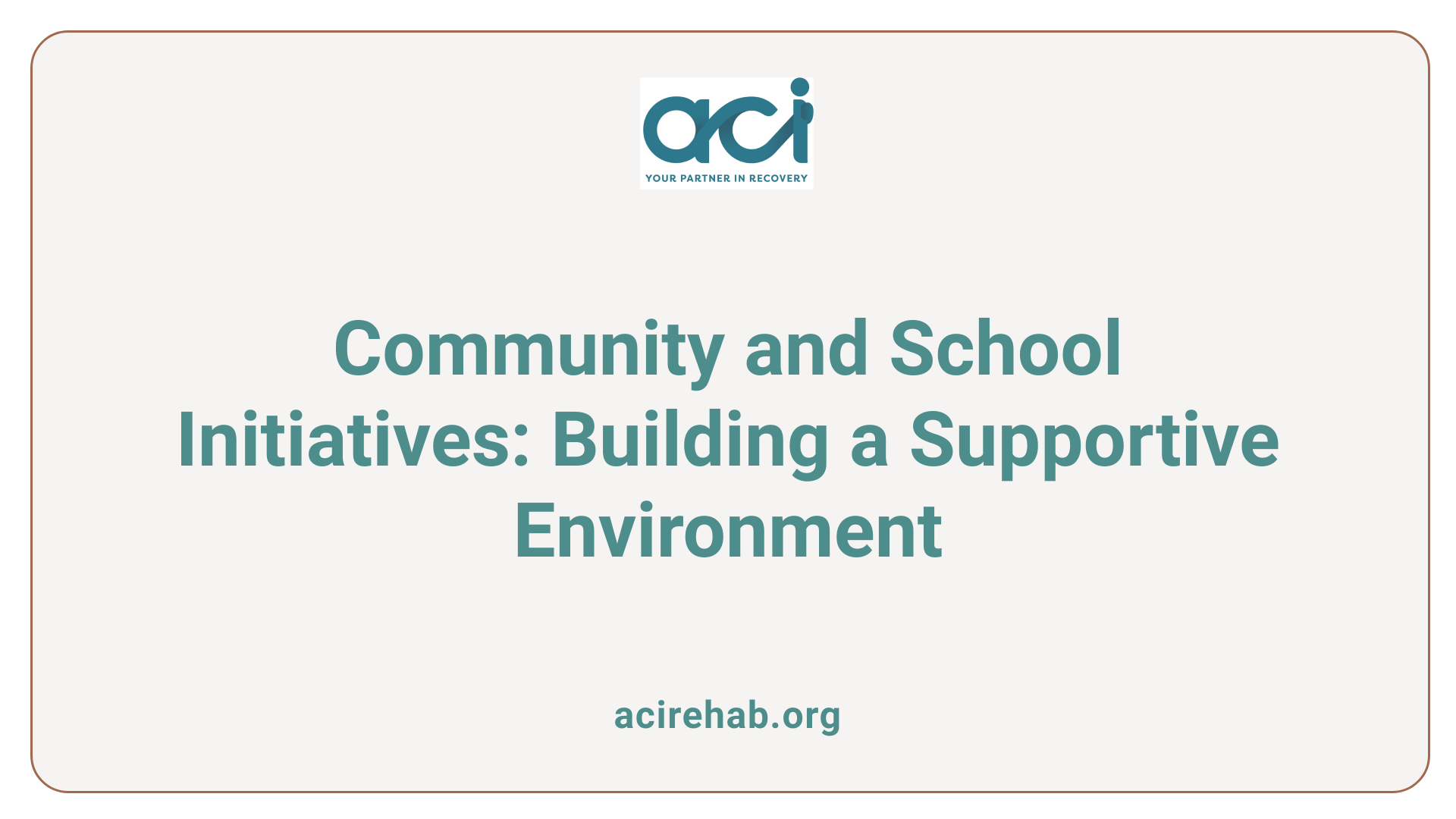
Local prevention programs
Community-level prevention programs focus on addressing substance use through localized strategies that meet specific needs. These initiatives actively engage local members to develop prevention measures tailored to their unique environment. By utilizing public health strategies, communities can create impactful campaigns addressing underage drinking, drug misuse, and overall substance abuse.
Community engagement
Initiatives like "Communities Talk to Prevent Alcohol and Other Drug Misuse" mobilize local efforts, bringing together parents, educators, and local organizations to raise awareness about the consequences of substance misuse among youth. Involvement from various stakeholders fosters an environment of collective responsibility, enhancing support networks and creating a robust foundation for preventive measures. Encouragingly, program outcomes can lead to healthier, more engaged communities with lower rates of substance-related issues.
School role in prevention
Schools play a vital role in substance use prevention by implementing educational programs designed to inform students about risks associated with drug and alcohol use. Evidence-based interventions delivered in the school setting can enhance students’ life skills, improve social competence, and help them develop resilience against peer pressure. The collaborative effort between families and schools ensures consistent messaging that reinforces healthy choices, creating a supportive environment for youth protection.
| Initiative | Description | Target Audience |
|---|---|---|
| Communities Talk | Mobilizes communities to discuss and address substance misuse. | Youth and young adults |
| School-based prevention programs | Educates students on risks and encourages healthy decision-making. | Students in schools |
| Localized prevention efforts | Tailors strategies to specific community needs for maximum impact. | Community members |
Understanding Risk and Protective Factors
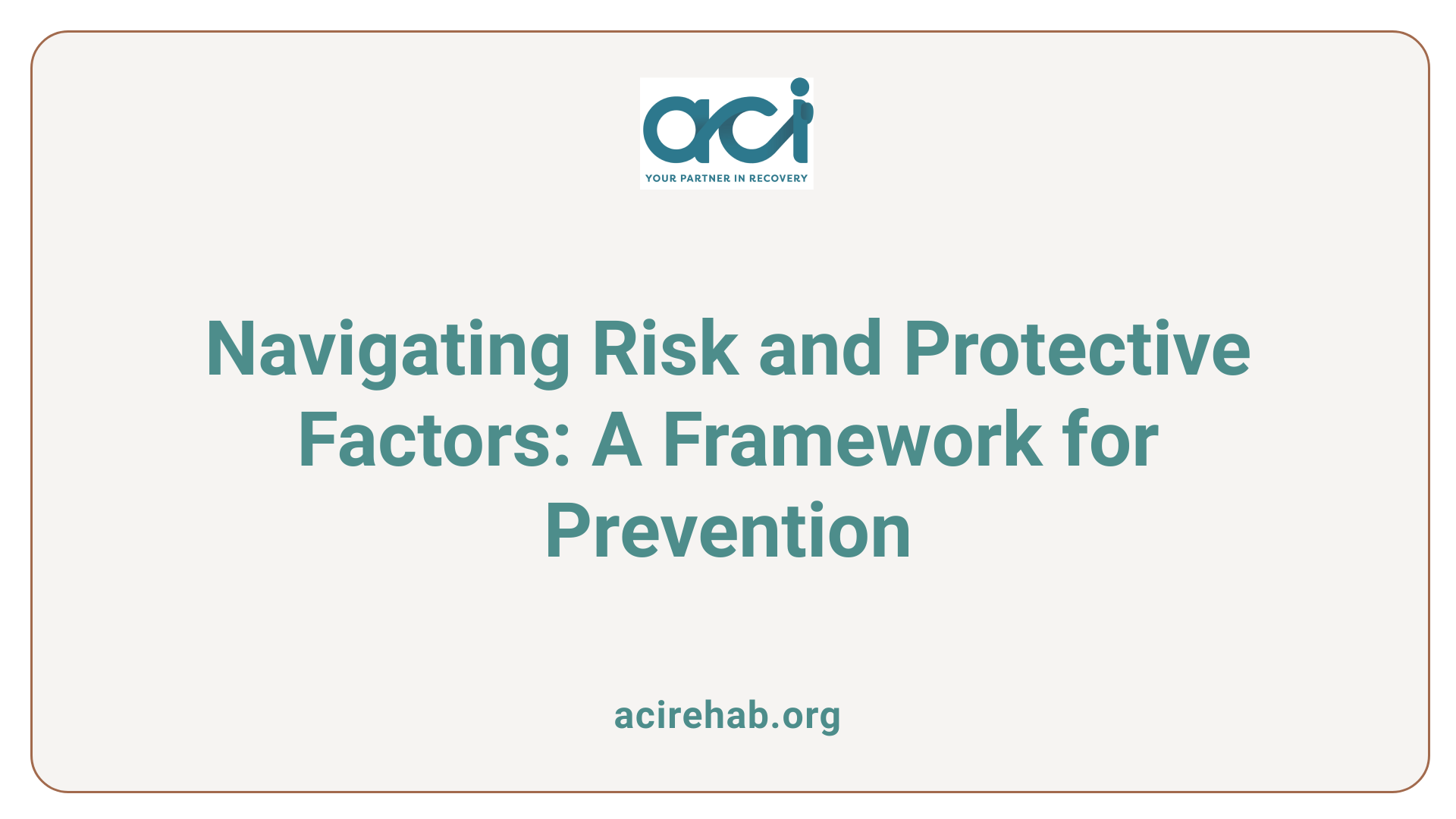
Impact of risk and protective factors
Risk and protective factors significantly influence the likelihood of developing substance use disorders. For instance, a family history of substance use or exposure to trauma increases susceptibility, while healthy relationships and supportive family dynamics can act as buffers. The socio-ecological model helps outline these factors at various levels—individual, relational, community, and societal—allowing for tailored prevention strategies.
Role in prevention planning
Incorporating risk and protective factors into prevention plans is crucial. Effective programs aim to strengthen protective factors, such as promoting resilience and building skills in youth. By addressing these elements, communities can implement strategies that effectively mitigate risks and promote healthier lifestyles, ultimately reducing the prevalence of substance use disorders.
Evidence-Based Methodologies and Best Practices
Research-Supported Strategies
Research shows that effective substance use prevention strategies rely heavily on evidence-based methodologies. Programs that utilize peer influence, promote skill development, and engage families have proven to be successful in curbing early substance use among youth. These strategies aim to enhance protective factors, such as positive peer relationships and strong family connections, while simultaneously mitigating risk factors like trauma and accessibility to drugs.
Programs can be categorized into three types: universal (for all children), selective (for at-risk groups), and indicated (for those who have begun using substances). By addressing specific community needs and individual circumstances, prevention efforts can significantly lower the incidence of substance use and improve overall health outcomes.
Goals of Effective Programs
The goals of effective substance use prevention programs include:
- Delaying initiation of substance use among youth to prevent addiction.
- Reducing risk factors such as substance accessibility and negative social influences.
- Enhancing protective factors, focusing on relationship building and social skills.
- Promoting health equity by ensuring access to prevention resources for underserved populations.
Implementing these evidence-based practices not only improves individual health outcomes but can also save society significant medical costs—up to $65 for every dollar invested in prevention. By fostering supportive environments and developing personal skills, communities can create sustainable prevention frameworks that benefit all ages.
Engaging Communities in Prevention Efforts
Public health approaches
Prevention and early intervention strategies are essential for reducing the impact of substance use and mental disorders within communities. Programs led by organizations like SAMHSA’s Substance Abuse Prevention Center focus on creating comprehensive systems that foster positive health outcomes. Initiatives such as the ‘Talk. They Hear You.’ campaign provide tools for parents to communicate effectively with their children about substance use. Additionally, events like National Prevention Week promote widespread awareness and resource sharing related to substance misuse.
Role of community coalitions
Community coalitions play a crucial role in these efforts by mobilizing local populations to combat substance use. Initiatives like ‘Communities Talk to Prevent Alcohol and Other Drug Misuse’ encourage collaboration and education around the consequences of substance misuse. Engaging diverse stakeholders builds a community’s capacity to implement effective prevention strategies tailored to specific local needs. By harnessing the power of community involvement, prevention initiatives can significantly improve public health and reduce substance-related issues.
The Path Forward in Prevention Efforts
As we move forward, the continuous development and implementation of effective prevention strategies are crucial to reducing the incidence and impact of substance use among youth. These efforts rely on a strong foundation of evidence-based practice, community engagement, and a comprehensive understanding of the unique needs within diverse populations. Through dedicated prevention initiatives, communities can foster environments that support healthy choices and resilience against substance misuse.
References
- Prevention of Substance Use and Mental Disorders – SAMHSA
- Prevention | National Institute on Drug Abuse (NIDA)
- Tips for Preventing Substance Abuse – Student Affairs
- Tips for Preventing Substance Abuse
- State Strategies for Preventing Substance Use and Overdose …
- Substance Use Prevention Month – SAMHSA
- Substance Use Among Youth | Reducing Health Risks … – CDC

